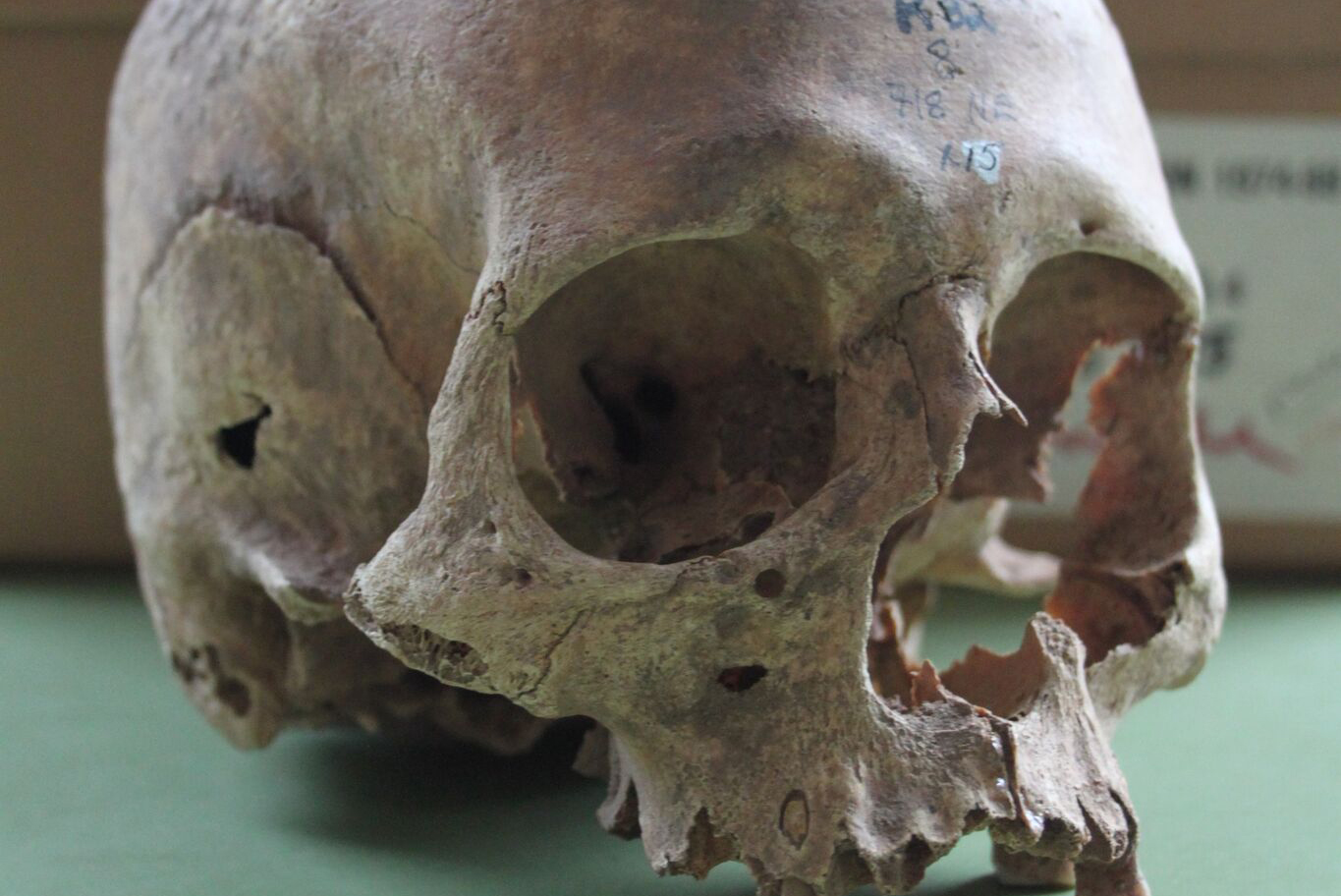The grave of the four youngsters who may have been killed in a burial ritual
CREDIT: UNIVERSITY OF BRISTOL
A mass grave of Viking warriors found in Derbyshire was accompanied by slaughtered children in a burial ritual enacted to help the dead reach the afterlife, archaeologists believe.
Experts from the University of Bristol have reexamined a huge pit of bones uncovered in the 1970s and 80s in Repton.
Examinations at the the time suggested the grave spanned centuries, but new radiocarbon analysis has revealed the skeletons actually belong to soldiers from the Great Viking Army, which drove Burgred, the king of Mercia into exile in 873AD.
The excavators also found four youngsters aged between eight and 18 buried together in a single grave with a sheep jaw at their feet, which they dated to the same period. At least two showed signs of traumatic injury suggesting they may have been sacrificed in a ritual to accompany the dead.
Bristol archaeologist Cat Jarman said: “The grave is very unusual. I don't know of any examples of four young people buried in a single grave like this from anywhere else in England in this period.
Read the rest of this article...





